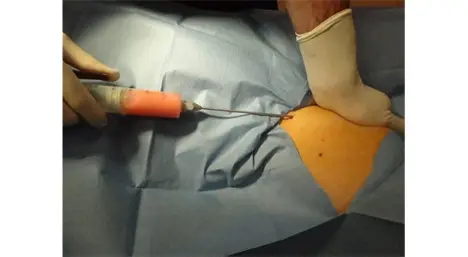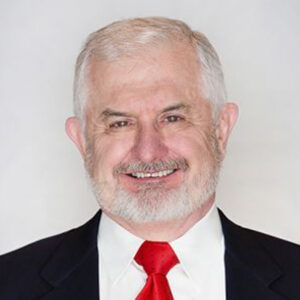Understanding Stem Cell Sources: Why Fat-Derived Cells Are Leading the Way
Stem cell therapy is revolutionizing medicine, offering hope and healing for injuries, inflammation, and chronic diseases. But before you choose a therapy, it’s essential to ask: what is the best source of stem cells?
That question—”Which stem cell source is best?”—is one of the most searched queries online. Whether it’s bone marrow, adipose (fat), or umbilical cord tissue, each source comes with benefits and limitations.
At Innovations Stem Cell Center, Dr. Bill Johnson—who has over 12 years of clinical expertise—has found adipose-derived stem cells to be the most effective and safest for patient care.
In this blog, we’ll cover 7 crucial differences between stem cell sources and explain why autologous adipose-derived stem cells stand out in the field of regenerative medicine.
1. Cell Quantity: Adipose Tissue Delivers More Healing Cells
Among all stem cell sources, fat provides up to 1,000 times more mesenchymal stem cells than bone marrow.
A simple outpatient liposuction procedure yields large quantities of these healing cells with minimal discomfort. Bone marrow aspiration, on the other hand, is painful, invasive, and yields fewer cells. Umbilical-derived stem cells are even more limited in number and depend on donor collection.
More cells = more healing power. This is a major advantage of adipose-derived stem cells.
Learn more: Adipose Stem Cell Harvesting

2. Compatibility: Autologous Cells Are Safer Than Donor Cells
Adipose-derived stem cells are autologous, meaning they come from your own body.
That makes them fully compatible with your immune system—there’s no risk of rejection, no allergic reaction, and no immune mismatch.
Donor-derived cells from umbilical cords or placentas may be seen as foreign by your body. They could trigger mild to severe immune responses, and their healing signals may not integrate effectively into your biology.
See more: Autologous Cell Therapy Explained
3. Inflammation Control: Fat-Derived Cells Lead the Way
One of the primary functions of mesenchymal stem cells (MSCs) is to regulate inflammation—a major factor in nearly every chronic illness.
Adipose-derived stem cells are particularly effective at releasing anti-inflammatory cytokines that suppress overactive immune responses, allowing tissue to regenerate without additional stress.
Bone marrow-derived cells have similar traits, but in lower quantity. Donor cells often struggle to communicate with the host immune system.
Clinical reference: Anti-Inflammatory Action of MSCs – PubMed
4. Versatility: Fat Stem Cells Adapt to More Conditions
Adipose-derived cells can transform into cartilage, muscle, nerves, blood vessels, and skin cells. Their pluripotency makes them ideal for treating:
Osteoarthritis (joints)
COPD and asthma (lungs)
Lupus, rheumatoid arthritis (autoimmune)
Crohn’s disease and colitis (gut)
Kidney, heart, and even sexual dysfunction conditions
Few stem cell types offer such broad therapeutic reach.
Learn more: Conditions Treated with Stem Cells
5. Patient Comfort: Easier, Safer Collection
Harvesting adipose tissue is safer and more comfortable than alternatives. The procedure is done under local anesthesia with minimal downtime.
Bone marrow extraction requires general or spinal anesthesia and may cause pain for weeks. Cord tissue involves lab processing, complex logistics, and regulatory hurdles.
Fat-derived stem cells offer a faster, safer path to regenerative care.
See details: What to Expect During the Procedure
6. Cell Communication: Autologous Cells Sync Perfectly with Your Body
Healing isn’t just about cell count—it’s about cellular communication.
Adipose-derived stem cells are highly effective at signaling other immune and structural cells. They guide repair, halt inflammation, and regulate healing in ways donor cells can’t.
Donor-derived cells may not “speak the same language” as your biology. That mismatch often leads to unpredictable or weaker results.
More insights: Mesenchymal Stem Cells & Immunomodulation – PubMed
7. Clinical Consistency: Adipose-Derived Therapies Deliver Results
At Innovations Stem Cell Center, adipose stem cells consistently produce improvements in:
Mobility and pain levels
Inflammatory disease symptoms
Lung and heart function
Quality of life
These results aren’t just anecdotal—they’re supported by years of patient outcomes and emerging scientific studies.
Patient experiences: Testimonials
Finding the Best Stem Cell Source for You
The question “What are the best stem cell sources?” is more important than ever. The answer, backed by research and results, points strongly toward adipose-derived autologous stem cells.
If you’re seeking safe, effective, and personalized regenerative therapy, start with your own body’s best healer—your fat cells.
📞 Schedule your consultation with Dr. Bill Johnson today: 214-972-0353
🌐 Visit: InnovationsStemCellCenter.com

